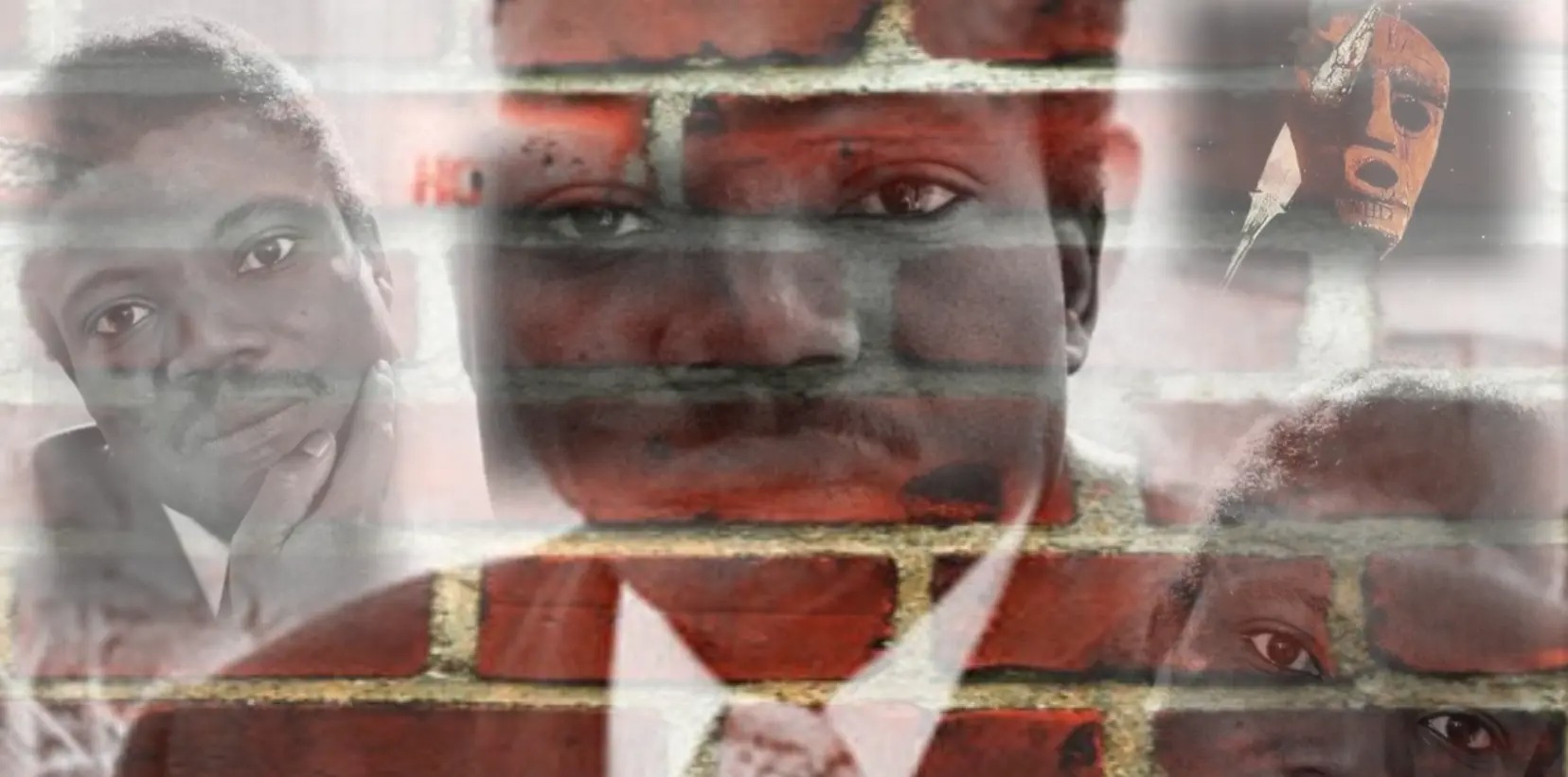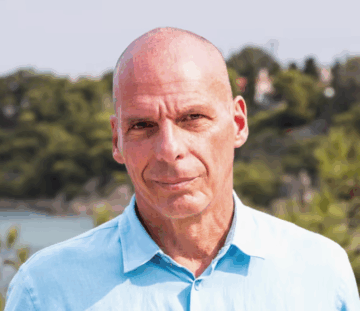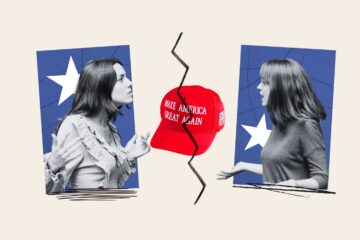Enjoying the content on 3QD? Help keep us going by donating now.
Category: Recommended Reading
Why AI Companies Are Racing to Build a Virtual Human Cell
Veronique Greenwood in Time Magazine:
 A human cell is a Rube Goldberg machine like no other, full of biological chain reactions that make the difference between life and death. Understanding these delicate relationships and how they go wrong in disease is one of the central fascinations of biology. A single mistake in a gene can bend the protein it makes into the wrong shape. A misshapen protein can’t do its job. And for want of that protein, the organism–you–may start to fall apart.
A human cell is a Rube Goldberg machine like no other, full of biological chain reactions that make the difference between life and death. Understanding these delicate relationships and how they go wrong in disease is one of the central fascinations of biology. A single mistake in a gene can bend the protein it makes into the wrong shape. A misshapen protein can’t do its job. And for want of that protein, the organism–you–may start to fall apart.
Cells are so complex, however, that getting a sense of how one protein’s failure spreads through the system is tough. Graham Johnson, a computational biologist and scientific illustrator at the Allen Institute for Cell Science, recalls fantasizing at a lunch table, more than 15 years ago, about a computer model of a cell so detailed, so complete, that scientists could watch such processes happening. At that time, “everyone just snickered,” he says. “It was just too unrealistic.” But now some researchers are using AI to take new steps towards the goal of a “virtual cell.” Google’s DeepMind is working on such a project, and the Chan Zuckerberg Initiative (CZI) has made virtual cells a major focus in their Biohub research network, says Theo Karaletsos, senior director of AI at CZI. There is even a new prize, set up by the Arc Institute, for virtual-cell-style models.
More here.
Enjoying the content on 3QD? Help keep us going by donating now.
How the Brain Moves From Waking Life to Sleep (and Back Again)
Yasemin Saplakoglu in Quanta Magazine:
 The pillow is cold against your cheek. Your upstairs neighbor creaks across the ceiling. You close your eyes; shadows and light dance across your vision. A cat sniffs at a piece of cheese. Dots fall into a lake. All this feels very normal and fine, even though you don’t own a cat and you’re nowhere near a lake. You’ve started your journey into sleep, the cryptic state that you and most other animals need in some form to survive. Sleep refreshes the brain and body in ways we don’t fully understand: repairing tissues, clearing out toxins and solidifying memories. But as anyone who has experienced insomnia can attest, entering that state isn’t physiologically or psychologically simple.
The pillow is cold against your cheek. Your upstairs neighbor creaks across the ceiling. You close your eyes; shadows and light dance across your vision. A cat sniffs at a piece of cheese. Dots fall into a lake. All this feels very normal and fine, even though you don’t own a cat and you’re nowhere near a lake. You’ve started your journey into sleep, the cryptic state that you and most other animals need in some form to survive. Sleep refreshes the brain and body in ways we don’t fully understand: repairing tissues, clearing out toxins and solidifying memories. But as anyone who has experienced insomnia can attest, entering that state isn’t physiologically or psychologically simple.
To fall asleep, “everything has to change,” said Adam Horowitz(opens a new tab), a research affiliate in sleep science at the Massachusetts Institute of Technology. The flow of blood to the brain slows down, and the circulation of cerebrospinal fluid speeds up. Neurons release neurotransmitters that shift the brain’s chemistry, and they start to behave differently, firing more in sync with one another. Mental images float in and out. Thoughts begin to warp. “Our brains can really rapidly transform us from being aware of our environments to being unconscious, or even experiencing things that aren’t there,” said Laura Lewis(opens a new tab), a sleep researcher at MIT. “This raises deeply fascinating questions about our human experience.”
More here.
Enjoying the content on 3QD? Help keep us going by donating now.
Friday, October 17, 2025
Why Sports Journalism Is Boring and Cruel
Jeannette Cooperman at The Common Reader:
 Sports writing can be brilliant; it is one of the most exciting forms, full of suspense and rich with lore. Yet most sports reporting winds up formulaic and pedestrian. This is an arena of high drama and individual challenge, but for the performer, the interest is in the training and the doing, not the words the rest of us try to surround it with. Reporters lean hard on interviews with athletes, yet they only turn chatty when they retire from their sport. While competing, they are intense and focused, utterly uninterested in coming up with quotable sound bites. They are not running for public office. They are running for speed, or swimming, or doing floor routines.
Sports writing can be brilliant; it is one of the most exciting forms, full of suspense and rich with lore. Yet most sports reporting winds up formulaic and pedestrian. This is an arena of high drama and individual challenge, but for the performer, the interest is in the training and the doing, not the words the rest of us try to surround it with. Reporters lean hard on interviews with athletes, yet they only turn chatty when they retire from their sport. While competing, they are intense and focused, utterly uninterested in coming up with quotable sound bites. They are not running for public office. They are running for speed, or swimming, or doing floor routines.
“The reporters talk to them right afterward, and sometimes all my son wants to do is go vomit into a trashcan!” exclaims the mother of a star collegiate athlete. So much adrenaline has pumped through his system, and right after a race, he is reeling with either triumph or disappointment.
More here.
Enjoying the content on 3QD? Help keep us going by donating now.
The first non-opioid painkiller
Michelle Ma at Works in Progress:
 In the nineteenth century, the invention of anesthesia was considered a gift from God. But post-operative pain relief has continued to rely on opioids, derivatives of opium, the addictive substance employed since ancient times. Although no other drug has managed to match the rapid, potent, and broadly effective relief delivered by opioids, their side effects have led to decades of addiction and overdose, leaving researchers keen to find a better solution.
In the nineteenth century, the invention of anesthesia was considered a gift from God. But post-operative pain relief has continued to rely on opioids, derivatives of opium, the addictive substance employed since ancient times. Although no other drug has managed to match the rapid, potent, and broadly effective relief delivered by opioids, their side effects have led to decades of addiction and overdose, leaving researchers keen to find a better solution.
This all changed in January 2025, when the FDA approved Vertex Pharmaceuticals’s Journavx (suzetrigine): the first non-opioid pain reliever suitable for treating post-surgery pain. Clinical trials found no signs of the problematic side effects associated with opioids: no drug abuse, tolerance, or withdrawal. But this was not an easy win: Vertex and other pharma companies spent decades searching for drugs like this to no avail.
More here.
Enjoying the content on 3QD? Help keep us going by donating now.
Markov Chains: The Strange Math That Predicts (Almost) Anything
Enjoying the content on 3QD? Help keep us going by donating now.
Three competing narratives of the second Trump administration
Jedediah Britton-Purdy and David Pozen in the Boston Review:
 Political judgment takes place within political time. And political time is less a matter of chronology than of genre. What kind of moment are we living through? Is our system of government undergoing a cyclical swing, an existential transformation, or something in between? Nine months into the second Trump administration, Americans confront three very different answers to these questions.
Political judgment takes place within political time. And political time is less a matter of chronology than of genre. What kind of moment are we living through? Is our system of government undergoing a cyclical swing, an existential transformation, or something in between? Nine months into the second Trump administration, Americans confront three very different answers to these questions.
One view, dominant at this point among mainstream liberals and centrists, is that the United States has entered a dangerous new era of authoritarian crisis. Following a playbook used in Viktor Orbán’s Hungary, Recep Tayyip Erdoğan’s Turkey, and other illiberal regimes, the Trump administration is attacking independent institutions such as the media and universities, turning the Justice Department and other government agencies into instruments of extortion and retaliation, manipulating official data, pardoning violent allies, dehumanizing marginalized communities, declaring endless emergencies, and preparing the military to suppress “the enemy from within.”
More here.
Enjoying the content on 3QD? Help keep us going by donating now.
Oscar Wilde’s library card reissued 130 years after being revoked over gay conviction
Paul Glynn in BBC:
 The British Library has honoured late Irish writer Oscar Wilde by reissuing a reader’s card in his name, 130 years after his original was revoked following his conviction for “gross indecency”.
The British Library has honoured late Irish writer Oscar Wilde by reissuing a reader’s card in his name, 130 years after his original was revoked following his conviction for “gross indecency”.
The celebrated novelist, poet and playwright was excluded from the library’s reading room in 1895 over his charge for having had homosexual relationships, which was a criminal offence at the time.
The new card, which will be collected by his grandson, author Merlin Holland, on Thursday, is intended to “acknowledge the injustices and immense suffering” Wilde faced, the library said.
Mr Holland said the new card is a “lovely gesture of forgiveness and I’m sure his spirit will be touched and delighted”.
More here.
Enjoying the content on 3QD? Help keep us going by donating now.
Mary Brunkow’s 2025 Nobel Prize
Enjoying the content on 3QD? Help keep us going by donating now.
Friday Poem
Ungently
My mother passed at forty-one
nearly half of a century ago—
a typical thought a son might have
|turning sixty-eight, the way a date
can trigger any number of thoughts
to cross your mind: her laugh
letting you know it was a good night,
how silent she put on a brave face
in front of the canaries she raised,
sunlight shaking through the window
like the nervous whistle of not having
long, and though she did sing along
to the Four Seasons and Neil Diamond
on days with reasons to get lost
|in a chorus, all I remember is her
buying the first album by Aerosmith
but only listening to “Dream On,”
the quiet way it opened to let her in,
how she set the volume loud
enough for the living room to fill
with the part where she and the singer
started screaming at the end.
by Charles Carr
from Rattle #89, Fall 2025
Enjoying the content on 3QD? Help keep us going by donating now.
Thursday, October 16, 2025
In Search of Ouologuem
Vamba Sherif in Guernica:
 The first time I read Yambo Ouologuem’s novel, Bound to Violence, I was shocked by the fury and seeming lack of restraint with which he wrote the story. Yet at the same time, his inventive style struck a chord with me, although I could not immediately explain why. I discovered the novel by chance at an antiquarian bookshop in Eindhoven, where I was living after my arrival in the Netherlands as a refugee fleeing the First Gulf War in Kuwait. The novel was tucked among books that had nothing to do with Africa, lined up alphabetically in a row as could be expected in bookstores or libraries. It was at that antiquarian bookshop that I encountered this book written by a man with a name that sounded Nigerian at first. The cover of the English translation was eye-catching: it was black with an image of a carved wooden mask impaled by a spear. The subtitle was noteworthy and revealing: A savage, panoramic novel of Black Africa.
The first time I read Yambo Ouologuem’s novel, Bound to Violence, I was shocked by the fury and seeming lack of restraint with which he wrote the story. Yet at the same time, his inventive style struck a chord with me, although I could not immediately explain why. I discovered the novel by chance at an antiquarian bookshop in Eindhoven, where I was living after my arrival in the Netherlands as a refugee fleeing the First Gulf War in Kuwait. The novel was tucked among books that had nothing to do with Africa, lined up alphabetically in a row as could be expected in bookstores or libraries. It was at that antiquarian bookshop that I encountered this book written by a man with a name that sounded Nigerian at first. The cover of the English translation was eye-catching: it was black with an image of a carved wooden mask impaled by a spear. The subtitle was noteworthy and revealing: A savage, panoramic novel of Black Africa.
I had previously thought that I knew the majority of novels by writers from Africa. I had grown up with, among others, Heinemann’s African Writers Series, which began with the publication of the seminal Things Fall Apart by Chinua Achebe, who became the first editor of the series. I had read Heinemann masterpieces including works by Sembene Ousmane and Ngugi wa Thiong’o, and the only novel by Cheik Hamidou Kane, Ambiguous Adventure (1961), one of my all-time favorites. But I had never heard of this particular writer. Who was Yambo Ouologuem?
More here.
Enjoying the content on 3QD? Help keep us going by donating now.
The Neural Mind: How Brains Think
Julien Crockett at the Los Angeles Review of Books:
 The project of understanding how the brain creates thoughts and feelings has progressed in fits and starts, leading some to despair that the so-called “mind-body” problem is fundamentally unanswerable. How can nonphysical ideas reside in physical brains? Yet, George Lakoff and Srini Narayanan claim in their new book The Neural Mind: How Brains Think, we now have a working theory.
The project of understanding how the brain creates thoughts and feelings has progressed in fits and starts, leading some to despair that the so-called “mind-body” problem is fundamentally unanswerable. How can nonphysical ideas reside in physical brains? Yet, George Lakoff and Srini Narayanan claim in their new book The Neural Mind: How Brains Think, we now have a working theory.
Lakoff, a UC Berkeley cognitive linguist best known for his work on metaphors and how they structure our understanding of the world, and Narayanan, a computational neuroscientist at Google DeepMind, are well positioned to make this claim. Together, they have been at the forefront of the remarkable transformation in neural mind research over the past 50 years as the fields of neuroscience, cognitive science, linguistics, and computer science have reframed our understanding of thought and everyday experience.
More here.
Enjoying the content on 3QD? Help keep us going by donating now.
“I’m a Barbie girl” in the style of 6 different classical composers
Enjoying the content on 3QD? Help keep us going by donating now.
Review of “Raise Your Soul” by Yanis Varoufakis: An intimate history of Greece
Pratinav Anil in The Guardian:
 Yanis Varoufakis entered public consciousness as the academic in a leather jacket who briefly became Greece’s finance minister in 2015. For having the temerity to lecture his creditors on the folly of austerity, he was treated as the villain of the piece. Yet for all his swagger, he has always been a surprisingly sober thinker: Keynesian at heart, internationalist in instinct, he has built a reputation as a critic of dollar hegemony and Fortress Europe, a defender of both the precariat and refugees. You wonder if he’s experienced some schadenfreude in watching Germany’s economic miracle go bad of late – an implosion largely brought about by administering to itself the austerian medicine it once prescribed to the Greeks.
Yanis Varoufakis entered public consciousness as the academic in a leather jacket who briefly became Greece’s finance minister in 2015. For having the temerity to lecture his creditors on the folly of austerity, he was treated as the villain of the piece. Yet for all his swagger, he has always been a surprisingly sober thinker: Keynesian at heart, internationalist in instinct, he has built a reputation as a critic of dollar hegemony and Fortress Europe, a defender of both the precariat and refugees. You wonder if he’s experienced some schadenfreude in watching Germany’s economic miracle go bad of late – an implosion largely brought about by administering to itself the austerian medicine it once prescribed to the Greeks.
His latest book, the 10th since 2010, departs from his usual sober fare. This time, he offers a collective portrait of five unyielding women in his life who, in their different ways, thumbed their noses at patriarchy and autocracy. Written after thugs beat him up in 2023 in what he described as a “brazen fascist attack”, this is a therapeutic enterprise that doubles as a counter-history of postwar Greece.
More here.
Enjoying the content on 3QD? Help keep us going by donating now.
Ode to the Indies
Louise Marburg at the Hudson Review:
 On the shelves and tables of any bookstore, be it Barnes & Noble or your neighborhood shop, you’ll find the latest fiction and non-fiction beckoning to be browsed. Browse you will, and maybe you’ll find an interesting book, but what you will rarely find in the majority of bookstores is a book published by an independent press. Indie publishing is blossoming these days as commercial publishers eschew wonderful books—essay collections and novels, memoirs, novellas, poetry, anthologies, flash fiction, short fiction, you name it—because these books are a little, or perhaps a lot, off the beaten path of mainstream American taste. That commercial publishers are in it for the money is understandable, and they do publish many excellent books, but independent publishers are usually in it for the books. For indie publishers whether a book will make a big profit (they hardly ever do) isn’t a consideration; indie presses publish books they love. Support for this labor comes from donations, grants, and private funds, while editors and staff sometimes work for little or no money. There is a vast world of indie books to be discovered and enjoyed, and while the readers of this journal and other literary journals like it may be doing just that, almost everyone else is not.
On the shelves and tables of any bookstore, be it Barnes & Noble or your neighborhood shop, you’ll find the latest fiction and non-fiction beckoning to be browsed. Browse you will, and maybe you’ll find an interesting book, but what you will rarely find in the majority of bookstores is a book published by an independent press. Indie publishing is blossoming these days as commercial publishers eschew wonderful books—essay collections and novels, memoirs, novellas, poetry, anthologies, flash fiction, short fiction, you name it—because these books are a little, or perhaps a lot, off the beaten path of mainstream American taste. That commercial publishers are in it for the money is understandable, and they do publish many excellent books, but independent publishers are usually in it for the books. For indie publishers whether a book will make a big profit (they hardly ever do) isn’t a consideration; indie presses publish books they love. Support for this labor comes from donations, grants, and private funds, while editors and staff sometimes work for little or no money. There is a vast world of indie books to be discovered and enjoyed, and while the readers of this journal and other literary journals like it may be doing just that, almost everyone else is not.
more here.
Enjoying the content on 3QD? Help keep us going by donating now.
D’Angelo’s Genius Was Pure, and Rare
Amanda Petrusich at The New Yorker:
This week, the R. & B. singer D’Angelo died at age fifty-one, of cancer. He was best known for deftly combining the heft and tenderness of soul music with the ingenuity and nerve of hip-hop, and while he was acclaimed in all the usual ways—four Grammy Awards, two platinum-selling albums, a music video so sexually charged that it still feels dangerous to watch in mixed company—he was also reclusive, enigmatic, unknowable. D’Angelo was a generational talent—an unusually artful singer, and an experimental and idiosyncratic songwriter. But he largely eschewed the accoutrements of stardom, releasing just three albums in nineteen years. (His final record, “Black Messiah,” came out in 2014.) It’s dangerous to codify that sort of resistance to celebrity as evidence of genius, but in a way, of course, it is—we all have an instinct to shield whatever feels most pure, and most rare.
D’Angelo, who was born Michael Eugene Archer, in Richmond, Virginia, is often compared to Prince, and rightly so, I think—each wielded a carnal, otherworldly falsetto. But, perhaps more crucially, they shared an exquisite sense of pacing, as if they were attuned to some elegant internal rhythm. Neither could be hurried. That feeling—stately, easy, deliberate—is inherently sensual.
more here.
Enjoying the content on 3QD? Help keep us going by donating now.
The Civil War Tearing Apart College Republicans
Alex Rouhandeh in Newsweek:
 Last year, the Republican Party relied heavily on Turning Point USA founder Charlie Kirk’s organizing prowess and influence among young voters to cement a second term for President Donald Trump, making significant gains in the 18–29-year-old vote, according to Pew Research analysis. Narrowing that gap and making other gains on President Joe Biden’s 2020 margins, Trump swept back into the White House. Kirk’s movement and role in narrowing the young voter gap from 30 points in 2016 to just 19 in 2024 has sparked debate over whether the GOP has cemented more broad appeal among young voters, a bloc that has typically been heavily Democratic.
Last year, the Republican Party relied heavily on Turning Point USA founder Charlie Kirk’s organizing prowess and influence among young voters to cement a second term for President Donald Trump, making significant gains in the 18–29-year-old vote, according to Pew Research analysis. Narrowing that gap and making other gains on President Joe Biden’s 2020 margins, Trump swept back into the White House. Kirk’s movement and role in narrowing the young voter gap from 30 points in 2016 to just 19 in 2024 has sparked debate over whether the GOP has cemented more broad appeal among young voters, a bloc that has typically been heavily Democratic.
Kirk’s assassination could prove a threat to that trajectory.
While Turning Point maintains a sprawling and active network across America’s college campuses, young conservatives who spoke to Newsweek say the organization operated heavily from the top down and benefited largely from Kirk’s skill and star power. Turning Point’s effectiveness in swaying young voters—particularly young men—now faces questions in the absence of its leader.
More here.
Enjoying the content on 3QD? Help keep us going by donating now.
D’Angelo – Untitled (How Does It Feel)
Enjoying the content on 3QD? Help keep us going by donating now.
Thursday Poem
The Nights You Fight Best
are
when all the weapons are pointed
at you,
when all the voices
hurl their insults
while the dream is being
strangled.
The nights you fight best
are
when reason gets
kicked in the
gut,
when the chariots of
gloom
encircle
you.
The nights you fight best
are
when the laughter of fools
fills the
air,
when the kiss of death is
mistaken for
love.
The nights you fight best
are
when the game is
fixed,
when the crowd screams
for your
blood.
The nights you fight best
are
on a night like
this
as you chase a thousand
dark rats from
your brain,
as you rise up against the
impossible,
as you become a brother
to the tender sister
of joy and
move on
regardless.
by Charles Bukowski
from Poetic Outlaws
Enjoying the content on 3QD? Help keep us going by donating now.
How Quantum Computing Works
Enjoying the content on 3QD? Help keep us going by donating now.
